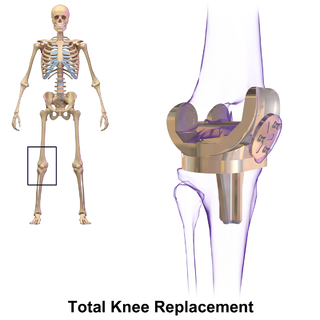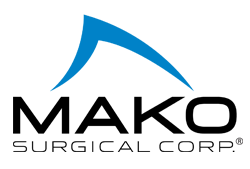Related Research Articles

Carnegie Mellon University (CMU) is a private research university in Pittsburgh, Pennsylvania. The institution was originally established in 1900 by Andrew Carnegie as the Carnegie Technical Schools. In 1912, it became the Carnegie Institute of Technology and began granting four-year degrees. In 1967, it became the current-day Carnegie Mellon University through its merger with the Mellon Institute of Industrial Research, founded in 1913 by Andrew Mellon and Richard B. Mellon and formerly a part of the University of Pittsburgh.

The School of Computer Science (SCS) at Carnegie Mellon University in Pittsburgh, Pennsylvania, US is a school for computer science established in 1988. It has been consistently ranked among the top computer science programs over the decades. As of 2022 U.S. News & World Report ranks the graduate program as tied for second with Stanford University and University of California, Berkeley. It is ranked second in the United States on Computer Science Open Rankings, which combines scores from multiple independent rankings.
Stryker Corporation is an American multinational medical technologies corporation based in Kalamazoo, Michigan. Stryker's products include implants used in joint replacement and trauma surgeries; surgical equipment and surgical navigation systems; endoscopic and communications systems; patient handling and emergency medical equipment; neurosurgical, neurovascular and spinal devices; as well as other medical device products used in a variety of medical specialties.

Hip replacement is a surgical procedure in which the hip joint is replaced by a prosthetic implant, that is, a hip prosthesis. Hip replacement surgery can be performed as a total replacement or a hemi/semi(half) replacement. Such joint replacement orthopaedic surgery is generally conducted to relieve arthritis pain or in some hip fractures. A total hip replacement consists of replacing both the acetabulum and the femoral head while hemiarthroplasty generally only replaces the femoral head. Hip replacement is one of the most common orthopaedic operations, though patient satisfaction varies widely. Approximately 58% of total hip replacements are estimated to last 25 years. The average cost of a total hip replacement in 2012 was $40,364 in the United States, and about $7,700 to $12,000 in most European countries.
Image-guided surgery (IGS) is any surgical procedure where the surgeon uses tracked surgical instruments in conjunction with preoperative or intraoperative images in order to directly or indirectly guide the procedure. Image guided surgery systems use cameras, ultrasonic, electromagnetic or a combination of fields to capture and relay the patient's anatomy and the surgeon's precise movements in relation to the patient, to computer monitors in the operating room or to augmented reality headsets. This is generally performed in real-time though there may be delays of seconds or minutes depending on the modality and application.

Robert Nicholas Maxwell Watson is a FreeBSD developer, and founder of the TrustedBSD Project. He is currently employed as a Professor of Systems, Security, and Architecture in the Security Research Group at the University of Cambridge Computer Laboratory.
The Computerworld Smithsonian Award is given out annually to individuals who have used technology to produce beneficial changes for society. Nominees are proposed by a group of 100 CEOs of information technology companies. The award has been given since 1989.

Robot-assisted surgery or robotic surgery are any types of surgical procedures that are performed using robotic systems. Robotically assisted surgery was developed to try to overcome the limitations of pre-existing minimally-invasive surgical procedures and to enhance the capabilities of surgeons performing open surgery.

Knee replacement, also known as knee arthroplasty, is a surgical procedure to replace the weight-bearing surfaces of the knee joint to relieve pain and disability, most commonly offered when joint pain is not diminished by conservative sources. It may also be performed for other knee diseases, such as rheumatoid arthritis. In patients with severe deformity from advanced rheumatoid arthritis, trauma, or long-standing osteoarthritis, the surgery may be more complicated and carry higher risk. Osteoporosis does not typically cause knee pain, deformity, or inflammation, and is not a reason to perform knee replacement.

Computer-assisted orthopedic surgery or computer-assisted orthopaedic surgery is a discipline where computer technology is applied pre-, intra- and/or post-operatively to improve the outcome of orthopedic surgical procedures. Although records show that it has been implemented since the 1990s, CAOS is still an active research discipline which brings together orthopedic practitioners with traditionally technical disciplines, such as engineering, computer science and robotics.
Sunil Saigal, is an Indian-born American engineer.
James Hiram Morris is a professor (emeritus) of Computer Science at Carnegie Mellon. He was previously dean of the Carnegie Mellon School of Computer Science and Dean of Carnegie Mellon Silicon Valley.
Patient registration is used to correlate the reference position of a virtual 3D dataset gathered by computer medical imaging with the reference position of the patient. This procedure is crucial in computer assisted surgery, in order to insure the reproducitibility of the preoperative registration and the clinical situation during surgery. The use of the term "patient registration" out of this context can lead to a confusion with the procedure of registering a patient into the files of a medical institution.
Computer-assisted surgery (CAS) represents a surgical concept and set of methods, that use computer technology for surgical planning, and for guiding or performing surgical interventions. CAS is also known as computer-aided surgery, computer-assisted intervention, image-guided surgery, digital surgery and surgical navigation, but these are terms that are more or less synonymous with CAS. CAS has been a leading factor in the development of robotic surgery.

MAKO Surgical Corp. was a publicly traded medical device company based in Florida. On September 25, 2013, the Board of Directors of Mako Surgical accepted a deal to be acquired by Stryker for $1.65B. The deal closed in December 2013.

Brainlab is a privately held German medical technology company headquartered in Munich, Bavaria. Brainlab develops software and hardware for radiotherapy and radiosurgery, and the surgical fields of neurosurgery, ENT and craniomaxillofacial, spine surgery, and traumatic interventions. Their products focus on image-guided surgery and radiosurgery, digital operating room integration technologies, and cloud-based data sharing.
Priya Narasimhan is a Professor of Electrical & Computer Engineering at Carnegie Mellon University in Pittsburgh, Pennsylvania. She is also the CEO and founder of YinzCam, a U.S.-based technology company that provides the mobile fan experience for a number of professional sports teams and leagues in the United States, Canada, Australia and New Zealand.

Globus Medical, Inc. is a publicly traded medical device company headquartered in Audubon, Pennsylvania, United States. Globus is focused on the design, development, and commercialization of products that enable surgeons to promote healing in patients with musculoskeletal disorders.
Augmented reality-assisted surgery (ARAS) is a surgical tool utilizing technology that superimposes a computer-generated image on a surgeon's view of the operative field, thus providing a composite view for the surgeon of the patient with a computer generated overlay enhancing the operative experience. It can be used for training, preparation for an operation, or performance of an operation. ARAS can be performed using a wide array of technology, including an optical head-mounted display (OHMD)—such as the Google Glass XE 22.1 or Vuzix STAR 1200 XL—and a digital overlay from robotic and laparoscopic surgery feeds. The technique has been primarily been tested in the urological and cardiovascular domains.
Brian Davies is a British emeritus professor of medical robotics at Imperial College London. He developed Probot, the first robotic device to operate upon a human being. Later, he developed the haptic based robotic assistant known as 'Acrobot', the first haptic based robot to be used in orthopaedic surgery. He is a Fellow of the Royal Academy of Engineering.
References
- ↑ Digioia, Anthony M.; Jaramaz, Branislav; Nikou, Constantinos; Labarca, Richard S.; Moody, James E.; Colgan, Bruce D. (2000). "Surgical navigation for total hip replacement with the use of hipnav". Operative Techniques in Orthopaedics. 10 (1): 3–8. doi:10.1016/S1048-6666(00)80036-1.
- ↑ Levison, Timothy J.; Moody, James E.; Jaramaz, Branislav; Nikou, Constantinos; Digioia, Anthony M. (2000). "Surgical Navigation for THR: A Report on Clinical Trial Utilizing Hip Nav". Medical Image Computing and Computer-Assisted Intervention – MICCAI 2000. Lecture Notes in Computer Science. Vol. 1935. pp. 1185–7. doi:10.1007/978-3-540-40899-4_126. ISBN 978-3-540-41189-5.